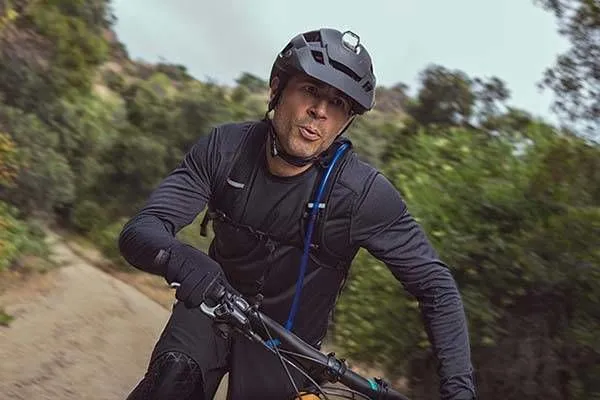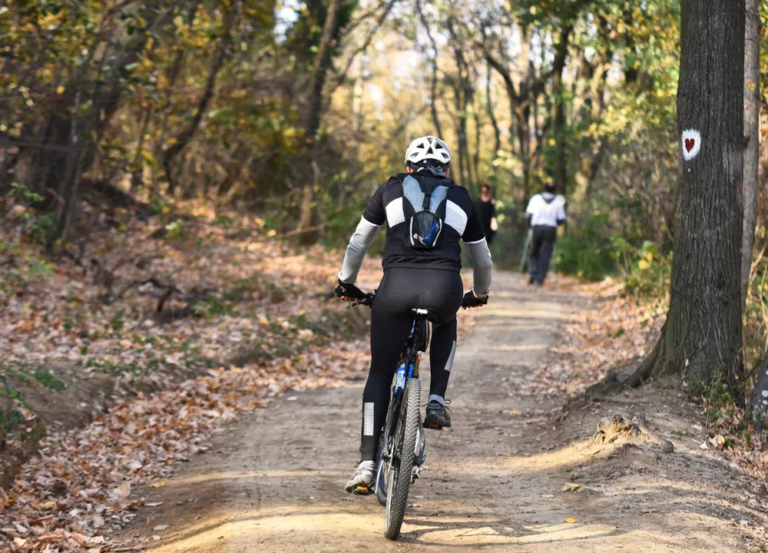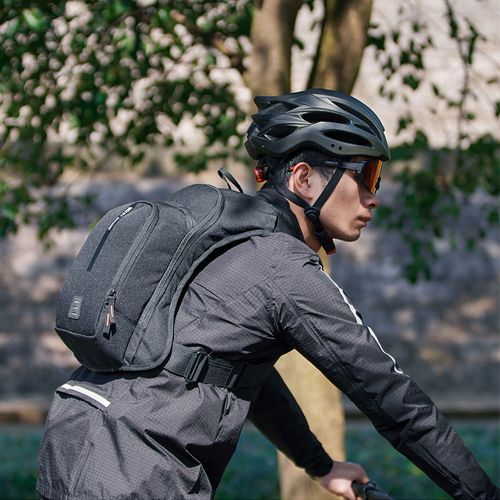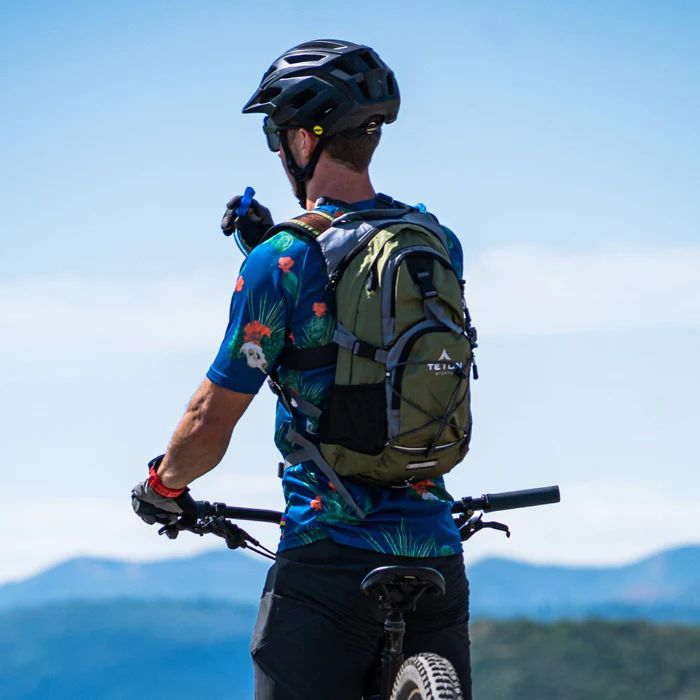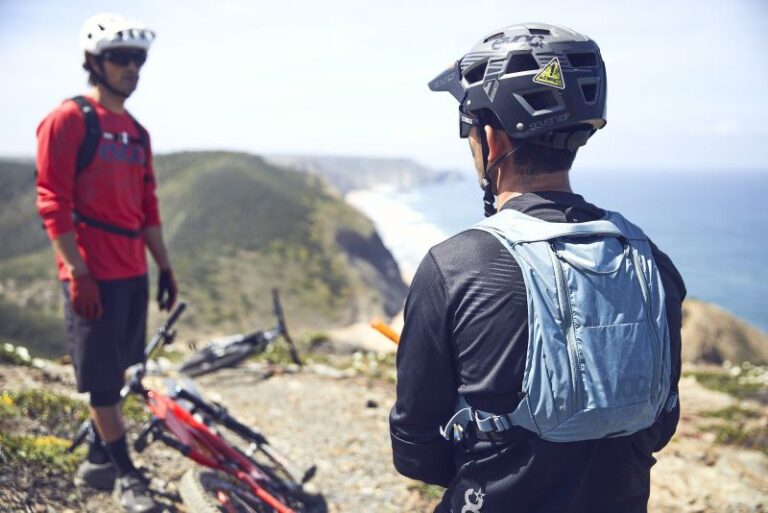Hydration Pack Vs Water Bottle For Mountain Biking Gravel Biking

Greetings from sunny Southern California! If you’ve taken a ride down our rugged mountain trails or breezy gravel paths, you’d know that staying hydrated is not just a tip – it’s a necessity. It’s the golden rule for us riders. But then comes the age-old question, Hydration pack vs water bottle for mountain biking gravel biking? Both have their loyal fan bases among the SoCal biking community, and today, I’ll dive into the pros and cons of each, all from the perspective of a mountain biker who’s kissed the Cali dirt more times than I’d like to admit!
Hydration Backpack: The Mobile Oasis
Having a hydration backpack, often just dubbed a “camelback” thanks to a popular brand, is like having a mini oasis that travels with you. Here are the ups and downs:

Pros:
- Generous Capacity: A hydration backpack can store a lot more water than a regular bottle, usually up to 3 liters. This means longer rides without the worry of running out.
- Hands-Free Hydration: With the sip tube just an arm’s length away, you can hydrate without having to reach for a bottle, especially useful when navigating tricky trails.
- Extra Storage: These packs come with pockets! Snacks, tools, sunscreen, or even a lightweight jacket; you’ve got space for all.
- Weight Distribution: The ergonomic design ensures the weight is evenly spread across your back, making it easier on long rides.
Cons:
- Heat: Southern California is known for its scorching sun. A backpack can make your back sweaty, especially during summer rides.
- Cleaning: Hydration bladders need regular cleaning to avoid mold and that dreaded plastic taste.
- Cost: A good quality hydration pack can be pricier than a water bottle and cage.

Water Bottle: The Classic Hydration Hero
Water bottles have been the companion of cyclists for decades. They’re straightforward, reliable, and have evolved significantly over the years.
Pros:
- Accessibility: Right there on your bike frame, easy to reach, and easy to refill.
- Ventilation: No backpack means your back gets all the cool California breeze it deserves.
- Low Maintenance: Rinse and refill. No intricate components to clean.
- Budget-Friendly: You can grab a good quality water bottle and cage without breaking the bank.
Cons:
- Limited Volume: Most water bottles have a limited capacity. For extended rides, one bottle might not cut it.
- Potential for Ejection: Rough trails can sometimes lead to your bottle getting bounced out of its cage.
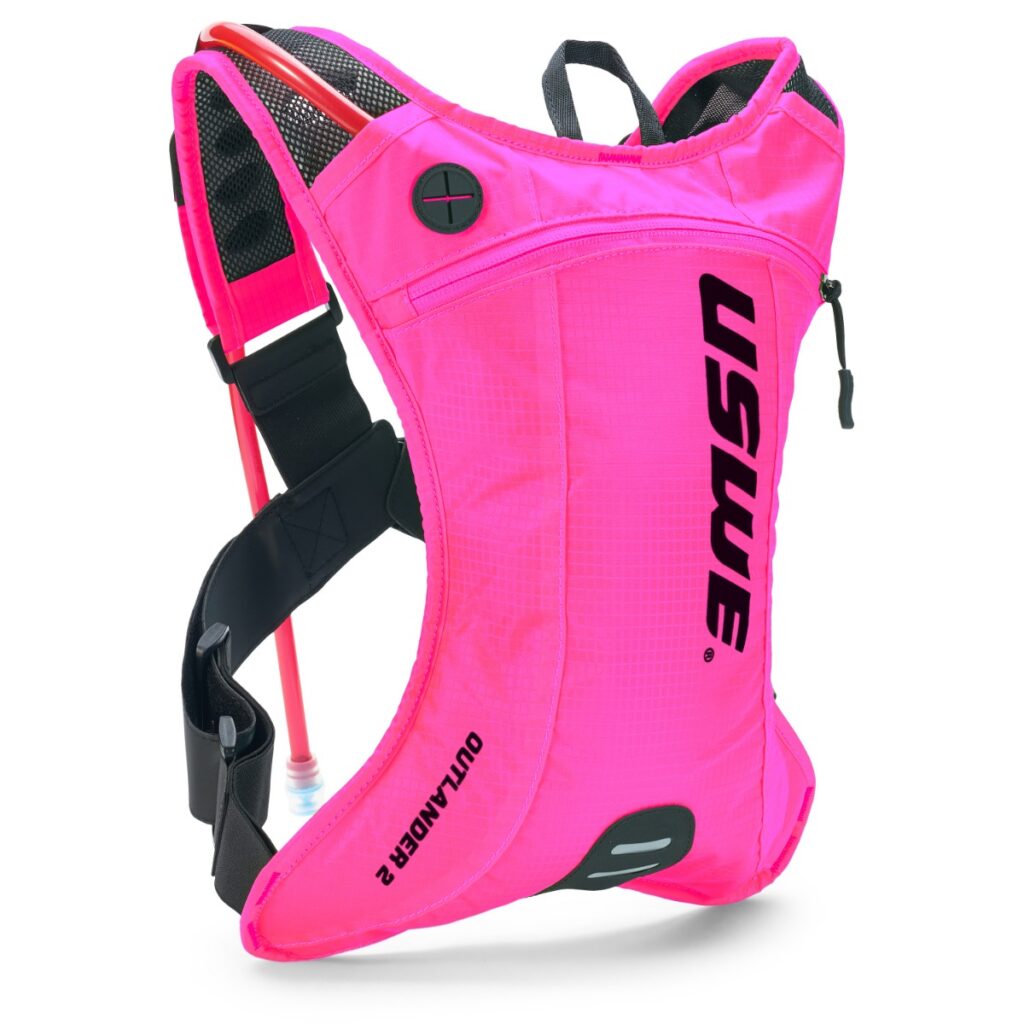
SoCal Specific Considerations
In Southern California, our riding conditions are unique:
- Trail Length and Intensity: Our trails can be long and demanding. If you’re planning an extended adventure, a hydration backpack offers the volume and storage you might need. But for shorter rides, a water bottle might suffice.
- Heat: We don’t mess around with our sun. If you’re someone who’s particularly bothered by a sweaty back, you might lean towards the water bottle. However, modern hydration packs are designed with ventilation in mind, so it’s worth checking those out.
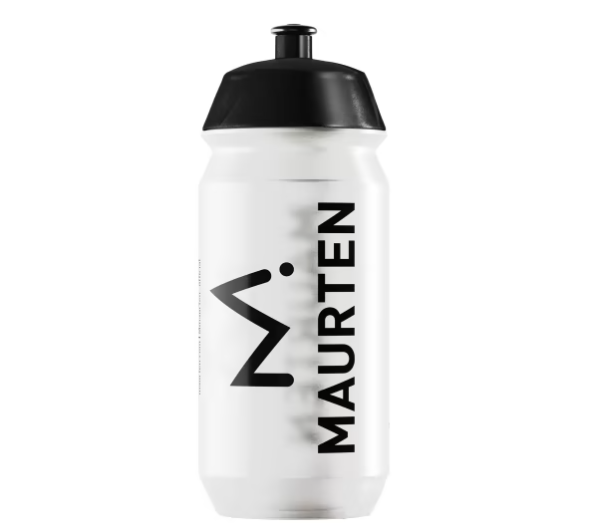
Final Verdict: Which Should You Choose?
Honestly, there’s no one-size-fits-all answer. It largely depends on your personal preferences and the kind of trails you’re hitting. For some, the weight and feel of a hydration pack is comforting, a constant reminder of preparedness. For others, the simplicity and ease of a water bottle are unmatched.
My personal take? I use both. For my long mountain biking treks where I know I’ll be out for hours, I swear by my hydration pack. But when I’m out on a breezy afternoon gravel ride, my trusty water bottle does the job.
If you’re still on the fence, maybe try both. Borrow a hydration pack or buy a budget-friendly one and see how it feels. And always, always, listen to your body. It’s the best indicator of when and how much you need to drink.
Here’s to many more hydrated rides under the golden SoCal sun! Remember, whether it’s from a sip tube or a bottle spout, keep that water flowing and those pedals turning.
John
Useful Links
Best Hydration Packs for Mountain Biking/Gravel Biking
The Bike Water Bottle You Should Grab for Each Ride
7 Best Bike Water Bottles & How to Choose!
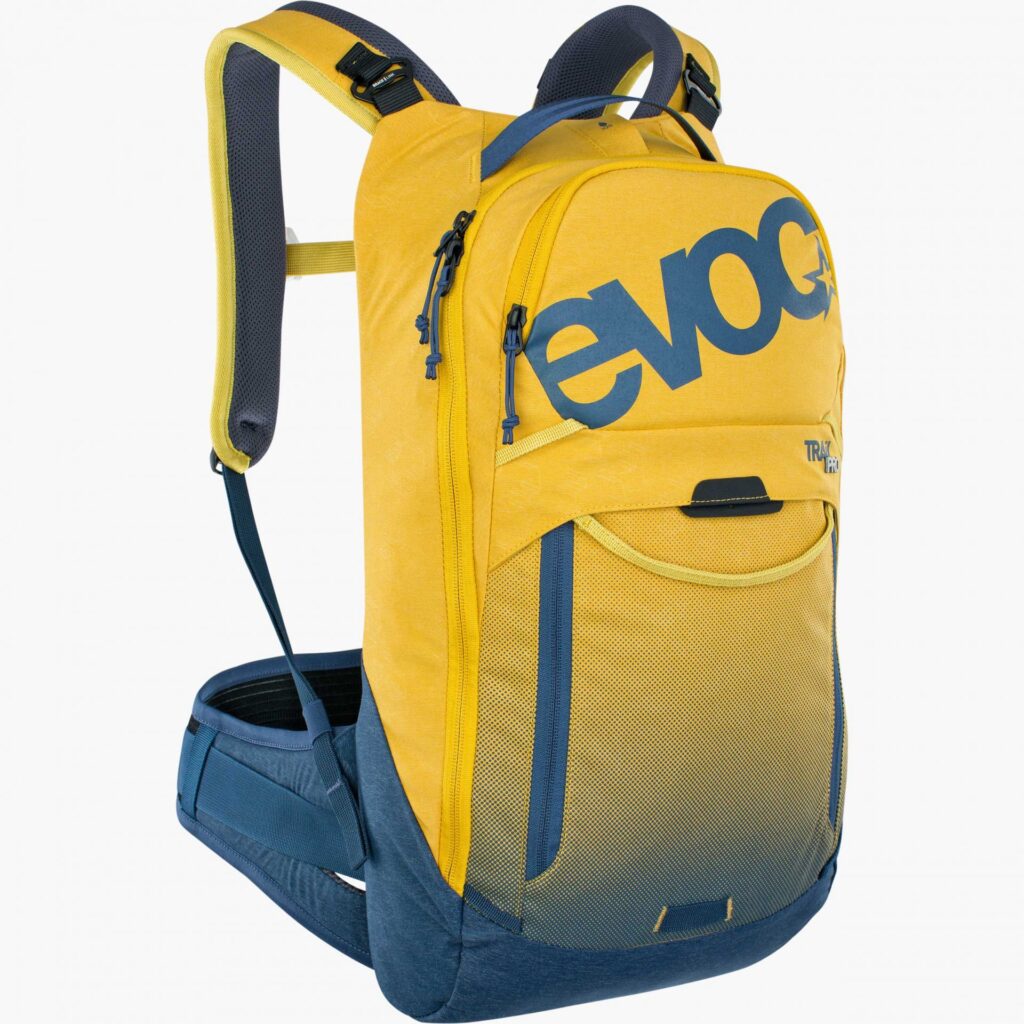
FAQ’s
Is a hydration pack or water bottle better for mountain biking?
Whether to use a hydration pack or water bottle for mountain biking largely depends on the rider’s preferences, needs, and the type of ride they’re embarking upon. Here’s a comparison to help you decide:
Hydration Pack (e.g., CamelBak)
Advantages:
- Higher capacity: Can hold more water, generally ranging from 1L to 3L or more. This is useful for long rides where refill points may be scarce.
- Stable: When worn properly, a hydration pack does not bounce or shift as much as water bottles might in their cages, especially on rough trails.
- Hands-free drinking: Riders can drink without removing their hands from the handlebars. This can be safer and more convenient, especially on technical terrain.
- Additional storage: Most hydration packs offer space for tools, food, a first aid kit, an extra layer of clothing, and other essentials.
- Protection: Some hydration packs come with built-in spine protectors which offer additional safety in case of a crash.
Disadvantages:
- Heat: Wearing a pack might make your back sweatier, especially in hot weather.
- Weight: Carrying a full pack can add significant weight.
- Cleaning: The reservoir and tube can require more effort to clean than a bottle.
- Cost: Generally more expensive than a water bottle and cage.
Water Bottle
Advantages:
- Cooling: Water bottles allow for more airflow around the rider’s back, which might be cooler in hot conditions.
- Accessibility: Easy to refill at water stations without taking off a pack.
- Cleaning: Generally simpler to clean than a hydration bladder.
- Weight: You carry only the weight of the bottle and the water.
- Cost: Bottles and cages are typically less expensive than hydration packs.
Disadvantages:
- Limited capacity: Most bottles hold between 500ml to 750ml.
- Less stability: On rough terrains, there’s a chance a bottle might eject from its cage.
- Requires a hand: Drinking from a bottle requires one hand off the handlebar, which may not be safe in all situations.
- Limited storage: No additional storage space for tools or snacks unless you have a saddle bag or other solutions.
Conclusion: For short rides or when you know you’ll have frequent access to refill points, a water bottle might suffice. For longer rides, technical terrains, or when you need to carry tools and food, a hydration pack might be more suitable. Some riders even choose to use both to ensure they have enough water and to benefit from the advantages of each system. As with many things in mountain biking, personal preference plays a big role, so it’s worth trying out both options to see what feels best for you.
Do mountain bikers use water bottles?
Yes, many mountain bikers use water bottles, especially during shorter rides or when riding in areas with frequent water refill points. Here’s why some mountain bikers prefer water bottles:
- Convenience: Water bottles are easy to remove and refill, and drinking from a bottle is straightforward without the need to bite or suck from a hose (as with hydration packs).
- Weight: For those conscious about the weight they carry, a water bottle might feel lighter than a filled hydration pack, especially once they’ve consumed most of the water.
- Cooling: Using a water bottle instead of a hydration pack can mean less coverage on the back, which might keep a rider cooler, especially in hot conditions.
- Cleaning: Cleaning a water bottle is typically simpler and quicker than cleaning a hydration pack’s bladder and tube.
- Cost: In general, purchasing a water bottle and cage is less expensive than a good-quality hydration pack.
However, there are challenges to consider:
- Limited Capacity: A typical water bottle holds between 500ml to 750ml of water, which might not be enough for longer rides.
- Ejection Risk: On very rough terrains, there’s a chance that a water bottle might bounce out of its cage.
- Hand Usage: Drinking from a water bottle requires taking one hand off the handlebars, which isn’t always safe or convenient, especially on technical trails.
Many modern mountain bikes still come with bottle cage mounts, and there are various cage designs made specifically to grip bottles tightly on rough terrain. Some mountain bikers choose to use both a hydration pack and a water bottle to maximize their hydration options, especially on longer rides.
What is the best way to carry water mountain biking?
The best way to carry water while mountain biking depends on the rider’s preferences, the ride’s duration, terrain, climate, and whether or not the rider needs to carry additional gear. Here are the main methods to carry water while mountain biking, along with their pros and cons:
- Hydration Pack:
- Pros:
- Can hold more water (1L to 3L or more).
- Allows for hands-free drinking.
- Additional storage for tools, snacks, spare clothing, etc.
- Some come with protection features, like spine protectors.
- Cons:
- Can make your back sweatier.
- Adds weight to your back.
- Requires more thorough cleaning.
- Pros:
- Water Bottle and Cage:
- Pros:
- Easier to refill.
- Simpler to clean.
- Potentially cooler since there’s less coverage on your back.
- Generally less expensive than hydration packs.
- Cons:
- Limited capacity.
- Risk of bottle ejecting on rough terrains.
- Requires a hand to drink.
- Pros:
- Frame Bags with Bladders:
- Pros:
- Centers weight on the bike frame.
- Can combine the convenience of a bottle with the capacity of a hydration pack.
- Provides additional storage options.
- Cons:
- Might interfere with the bike’s handling due to the weight.
- Not all bikes have suitable frame space.
- Pros:
- Hip Packs with Water Bottles/Bladders:
- Pros:
- Keeps weight off the rider’s back.
- May be cooler than a traditional hydration pack.
- Some come with storage for essential tools.
- Cons:
- Limited water capacity compared to larger hydration packs.
- Can shift or bounce while riding.
- Pros:
- Bikepacking Bags with Water Carrying Features:
- Pros:
- Suitable for multi-day adventures.
- Can carry large amounts of water and gear.
- Distributes weight across the bike.
- Cons:
- Bulky and can affect bike handling.
- Not suitable for technical or fast rides.
- Pros:
Tips:
- For shorter rides (1-2 hours) in moderate temperatures, a water bottle might suffice.
- For longer rides, or rides in hotter climates where you’ll be sweating more, a hydration pack might be more appropriate.
- For multi-day adventures or bikepacking trips, using a combination of methods, such as frame bags and multiple water bottles or hydration bladders, might be necessary.
Ultimately, the best method is a matter of personal preference and the specific requirements of the ride. It’s essential to prioritize staying hydrated and choose a system that you find convenient and comfortable.
Is a bladder better than a water bottle backpacking?
Whether a bladder (hydration reservoir) or a water bottle is better for backpacking largely depends on the individual’s preferences and the nature of the backpacking trip. Here’s a breakdown of the pros and cons of each:
Hydration Bladder (e.g., CamelBak, Platypus)
Pros:
- Convenient Hydration: The hose allows you to drink on the go without having to stop and remove the water source from your pack.
- Weight Distribution: Bladders lie flat and distribute weight evenly in your pack when filled.
- Space-Saving: As you drink from a bladder, it takes up less space in your pack, which can help maintain a compact load.
Cons:
- Cleaning: They can be challenging to clean, especially after using them for beverages other than water.
- Durability: While they’re tough, they can puncture or tear, leaving you without a water container.
- Refilling: Depending on the water source, they might be harder to refill than a bottle.
- Cannot see the water level: Unlike transparent water bottles, it’s challenging to gauge how much water you have left unless the bladder has a clear window or marking.
Water Bottle
Pros:
- Ease of Use: Bottles are easy to fill, drink from, and clean.
- Durability: Hard bottles are less likely to puncture or break than a bladder.
- Measuring: Clear bottles let you easily see how much water you have left.
- Versatility: Useful for purposes other than drinking, such as pouring or sharing water.
Cons:
- Accessibility: Typically, you need to stop or at least slow down to drink from a bottle unless you have easily accessible side pockets on your backpack.
- Bulkiness: Bottles can be bulkier and may not conform to the shape of a backpack as a bladder would.
- Weight Distribution: The weight doesn’t adjust as you drink, and if bottles aren’t packed carefully, they can throw off your pack’s balance.
Considerations for Your Trip:
- Duration and Access to Water: For shorter trips or where water sources are abundant, a bottle might suffice. For extended hikes, especially in dry areas, a bladder’s larger capacity and easy access can be invaluable.
- Packing Space: If you’re tight on space, a bladder might be more convenient.
- Activity Level: If you’re doing rigorous hiking and don’t want to stop often, a bladder offers on-the-go hydration.
In many cases, backpackers choose to use a combination of both: a bladder for easy hydration while hiking and a bottle for camp use or to ensure they have a durable container if the bladder fails.
Lastly, consider the environmental impact. If you’re using disposable plastic water bottles, remember they generate waste. Reusable water containers, whether bladders or bottles, are more eco-friendly.

